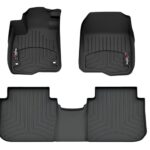Electric vehicles (EVs) are rapidly gaining popularity, and as the technology advances, so does the infrastructure supporting them. One of the most significant advancements in EV charging is the Level 3 Ev Charger, also known as DC fast charging. This guide will dive deep into level 3 EV chargers, exploring what they are, how they work, and why they are crucial for the future of electric mobility.
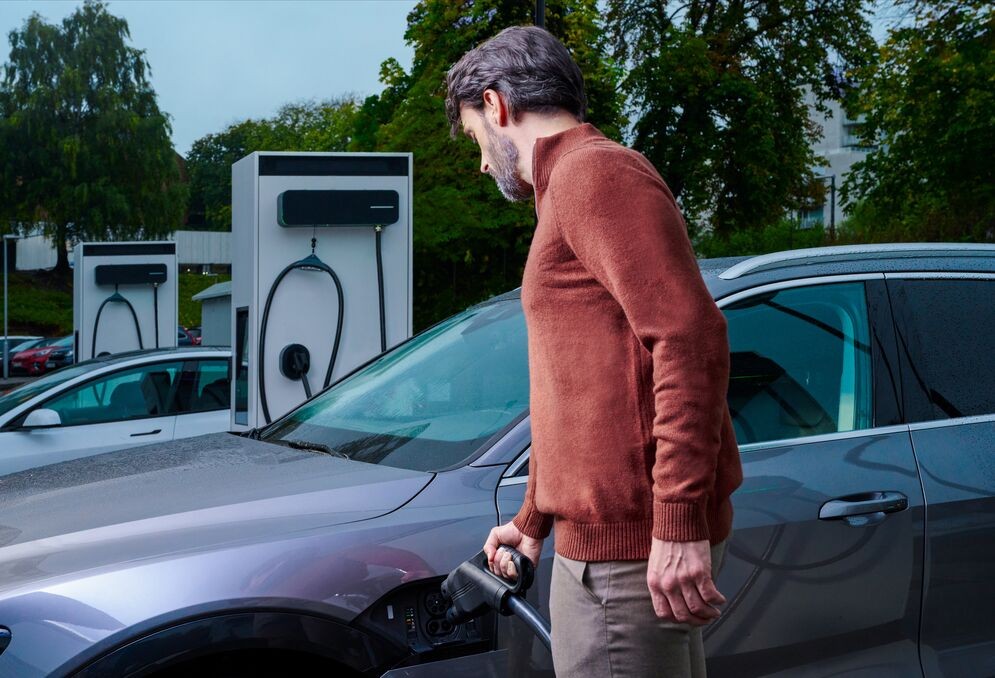 A man is plugging in a blue charging cable to an EVBox Troniq Modular Level 3 EV charging station, highlighting the user-friendly design and accessibility of fast charging technology.
A man is plugging in a blue charging cable to an EVBox Troniq Modular Level 3 EV charging station, highlighting the user-friendly design and accessibility of fast charging technology.
Understanding the different levels of EV charging is essential for every EV owner and prospective buyer. The charging speed and convenience vary significantly between Level 1, Level 2, and Level 3 chargers. Level 3 charging stands out as the fastest option currently available, drastically reducing charging times for electric vehicles and making long journeys more feasible.
Decoding EV Charging Levels: 1, 2, and 3
The classification of EV chargers into Level 1, Level 2, and Level 3 is based on their power output. Higher power output translates directly to faster charging times. Think of it like filling a water tank – a higher flow rate (power output) will fill the tank faster. Here’s a quick comparison:
Level 1 Charging:
Level 1 charging is the most basic and slowest form of EV charging. It utilizes a standard household outlet (120V in North America) and does not require any specialized charging equipment. You simply plug your EV into a regular wall socket.
- Power Output: 1.3 kW to 2.4 kW
- Charging Speed: Adds approximately 3-5 miles of range per hour.
- Best For: Overnight charging at home, topping off battery range, situations where time is not a constraint.
Level 2 Charging:
Level 2 chargers are significantly faster than Level 1 and are the most common type for home and public charging. They require a 240V power source (in North America) and typically necessitate the installation of a dedicated charging station.
- Power Output: 7.4 kW to 22 kW
- Charging Speed: Adds around 25-35 miles of range per hour at 7.4kW, and up to 75 miles per hour at 22kW.
- Best For: Home charging, workplace charging, public parking lots, businesses offering EV charging as a service.
Level 3 Charging (DC Fast Charging):
Level 3 charging, the focus of this article, represents the pinnacle of current EV charging technology. Also known as DC fast charging or rapid charging, it utilizes a direct current (DC) connection directly to the car’s battery, bypassing the onboard charger. This results in significantly faster charging times compared to Level 1 and Level 2 AC charging.
- Power Output: 50 kW to 400 kW and beyond
- Charging Speed: Can add 100-200 miles of range in just 30 minutes, and some ultra-fast chargers can add even more.
- Best For: Highway travel, quick charging stops, commercial applications like fleet charging, locations where rapid turnaround is essential.
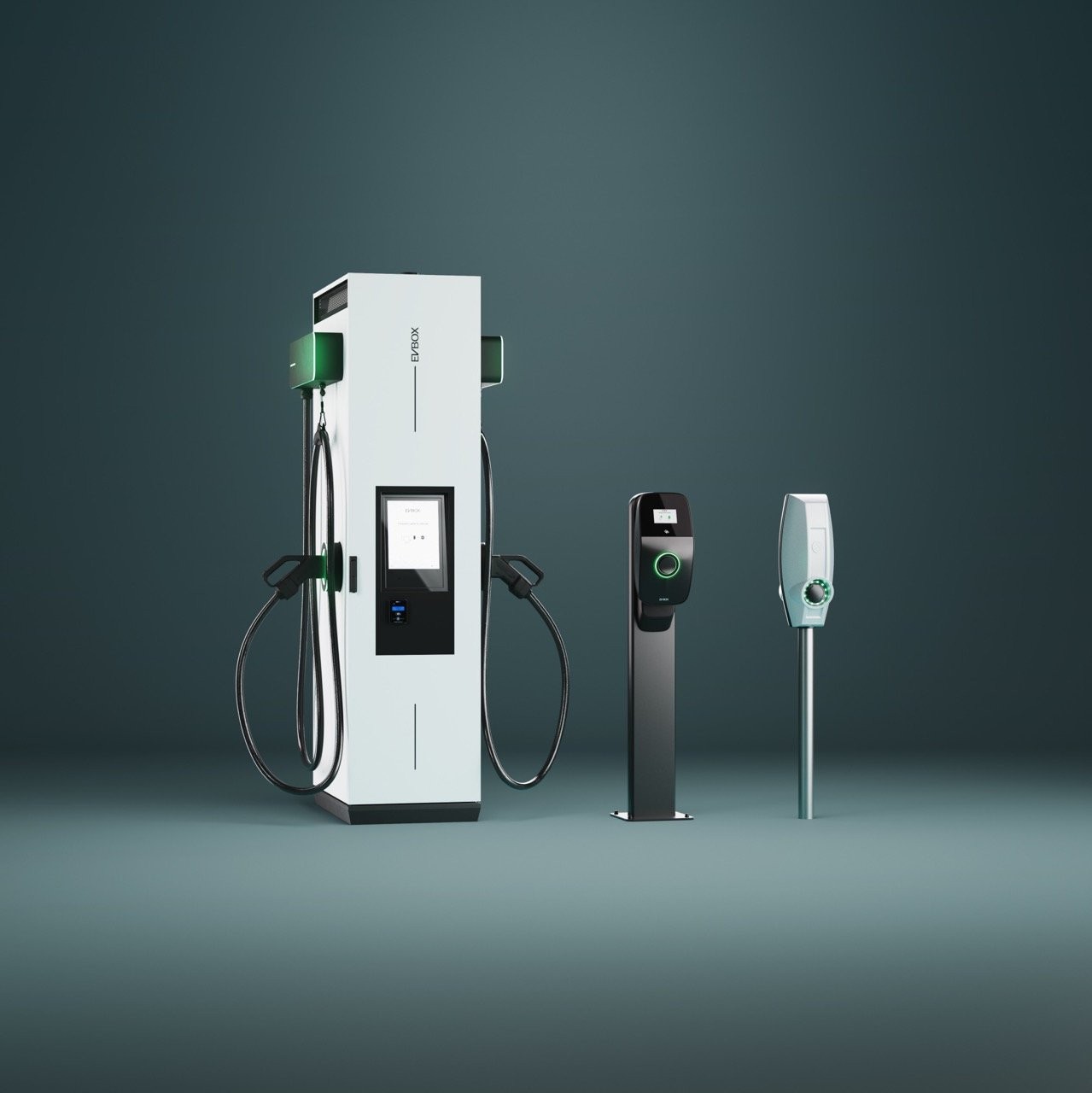 A line-up of different EV charging solutions, showcasing the EVBox Troniq Modular (Level 3 DC fast charger) on the left, highlighting its robust design for high-power public charging.
A line-up of different EV charging solutions, showcasing the EVBox Troniq Modular (Level 3 DC fast charger) on the left, highlighting its robust design for high-power public charging.
Level 3 EV Charger: Delving into DC Fast Charging
You might encounter various terms for Level 3 charging such as rapid charging, fast charging, ultra-fast charging, or DC charging. Essentially, these terms are often used interchangeably and all point to the same type of high-speed EV charging. The key differentiator is the use of Direct Current (DC) instead of Alternating Current (AC).
What Exactly is Level 3 EV Charging?
At its core, level 3 EV charging is the quickest way to replenish an electric vehicle’s battery. It leverages high-power DC charging stations to deliver electricity directly to the EV battery, bypassing the limitations of the vehicle’s internal AC-to-DC converter. This direct delivery of DC power is what enables the significantly faster charging speeds.
How Does Level 3 Charging Work?
To understand the efficiency of Level 3 charging, it’s crucial to grasp the difference between AC and DC power. The electrical grid primarily distributes power as Alternating Current (AC). However, EV batteries store energy as Direct Current (DC).
-
AC Charging (Level 1 & 2): With Level 1 and Level 2 charging, the AC power from the grid enters the vehicle and is converted to DC by an onboard charger within the car itself before being stored in the battery. This onboard charger has a limited conversion capacity, which restricts the charging speed.
-
DC Charging (Level 3): Level 3 chargers are smarter and more powerful. They contain a large AC-to-DC converter within the charging station itself. This conversion happens outside the vehicle, and DC power is then directly fed into the EV battery, bypassing the vehicle’s onboard charger. This direct DC power delivery, at a much higher amperage and voltage, is what achieves rapid charging.
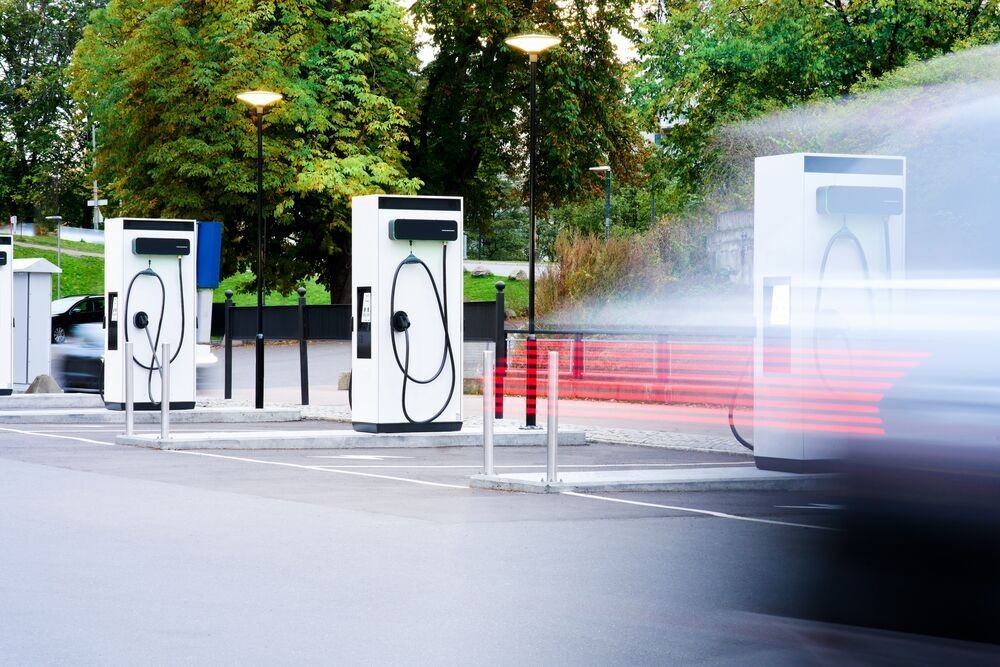 A sleek silver electric car is rapidly charging at an EVBox Troniq Modular Level 3 charging station in a modern parking area, demonstrating the speed and convenience of fast charging for EV drivers on the go.
A sleek silver electric car is rapidly charging at an EVBox Troniq Modular Level 3 charging station in a modern parking area, demonstrating the speed and convenience of fast charging for EV drivers on the go.
The Advantages of Level 3 EV Chargers
Level 3 chargers offer a multitude of benefits, making them indispensable for widespread EV adoption:
- Speed and Convenience: The most significant advantage is speed. Level 3 chargers can drastically reduce charging times from hours to minutes. This is particularly crucial for long-distance travel, allowing drivers to quickly recharge and continue their journey.
- Enabling Long-Distance Travel: Level 3 charging infrastructure is essential for making electric vehicles viable for long road trips. Without fast charging, range anxiety would be a much greater barrier to EV adoption.
- Supporting Commercial Applications: Businesses, fleet operators, and public charging networks rely heavily on Level 3 chargers to provide efficient and convenient charging services. For example, taxi fleets or delivery services can quickly recharge their vehicles, minimizing downtime.
- Strategic Placement: Level 3 charging stations are strategically placed in locations where quick charging is most needed, such as highway rest stops, urban centers, and commercial areas.
The Cost of Level 3 Charging
While Level 3 charging offers unparalleled speed, it typically comes at a higher cost compared to Level 1 and Level 2 charging. Several factors contribute to this price difference:
- Infrastructure Investment: Level 3 charging stations are significantly more complex and expensive to install and maintain than Level 1 or Level 2 chargers. They require high-power electrical connections, sophisticated conversion equipment, and robust cooling systems.
- Electricity Demand Charges: High-power DC fast chargers can incur demand charges from electricity providers due to their high peak power consumption. These charges contribute to the overall cost of operation.
- Convenience Premium: Part of the cost reflects the convenience and speed offered by Level 3 charging. You are paying for the time saved and the accessibility of rapid charging.
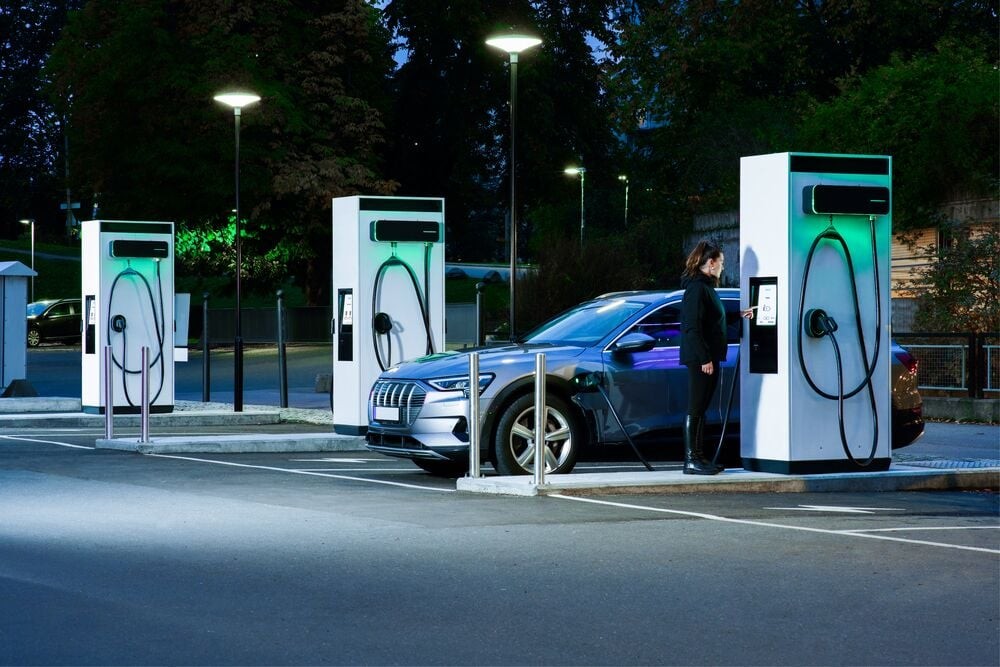 A woman is using a credit card to pay for her EV charging session at a Level 3 charging station, illustrating the payment process and the associated costs of fast charging.
A woman is using a credit card to pay for her EV charging session at a Level 3 charging station, illustrating the payment process and the associated costs of fast charging.
The actual cost of Level 3 charging can vary depending on several factors, including:
- Location: Charging prices can differ based on geographic location and local electricity rates.
- Charging Provider: Different charging networks have varying pricing structures.
- Pricing Model: Some providers charge per kWh (kilowatt-hour), while others may charge by the minute, or a combination of both. Membership plans and pay-as-you-go options can also influence the final cost.
- Vehicle Charging Capacity: It’s important to note that your EV’s maximum DC charging rate will limit the actual charging speed, even at a high-power Level 3 station. If your car can only accept 50kW, using a 350kW charger won’t charge it faster than 50kW. You might end up paying more for unused capacity if charged by the minute.
EV Compatibility with Level 3 Chargers
The good news is that most modern electric vehicles are compatible with Level 3 DC fast charging. However, the maximum charging power that each EV can handle varies significantly based on its battery technology and thermal management system.
- Charging Standards: Common DC fast charging connectors include CCS (Combined Charging System) and CHAdeMO. Tesla vehicles use their proprietary Supercharger network, but most Tesla models are also compatible with CCS chargers via an adapter.
- Battery Capacity and Charging Rate: EV batteries have different capacities and maximum DC charging rates. Some high-end EVs can accept charging rates of 250kW or even 350kW, while others are limited to 50kW or 150kW. Consult your vehicle’s specifications to understand its maximum DC charging capability.
- Older EVs and Exceptions: A few older EVs or models with smaller batteries might not be equipped for Level 3 charging. It’s always best to verify your vehicle’s charging compatibility.
 An aerial view of a highway winding through a lush forest, symbolizing long-distance travel and the role of Level 3 charging in making EV road trips practical and enjoyable.
An aerial view of a highway winding through a lush forest, symbolizing long-distance travel and the role of Level 3 charging in making EV road trips practical and enjoyable.
Level 3 Chargers for Home Use?
While Level 2 chargers are becoming increasingly common for home installation, Level 3 chargers are generally not practical or feasible for residential use. The reasons are primarily related to power requirements and cost:
- High Power Demand: Level 3 chargers require extremely high power electrical connections (often 480V or higher), which are not typically available in residential settings. Standard home electrical systems are designed for much lower power consumption.
- Infrastructure and Installation Costs: Installing a Level 3 charger at home would necessitate significant upgrades to your electrical panel, potentially requiring new transformers and extensive wiring. The cost of equipment and installation would be prohibitively expensive for most homeowners.
- Practicality: The primary benefit of Level 3 charging is rapid speed for quick top-ups when time is critical. For home charging, where vehicles are typically parked overnight, the speed of Level 3 charging is unnecessary. Level 2 charging is usually sufficient for overnight replenishment.
Level 3 charging is best suited for public and commercial locations where rapid charging is essential for convenience and operational efficiency.
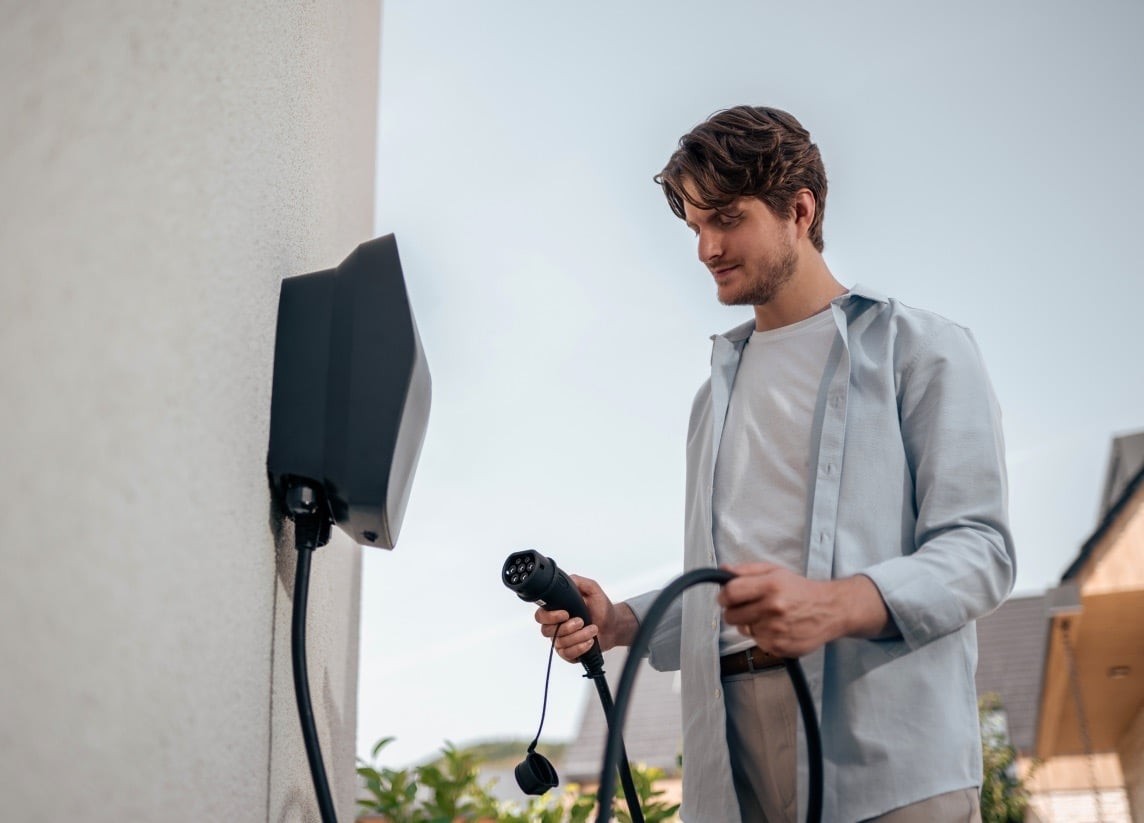 A man is using an EVBox Livo Level 2 charging station installed at his home, showcasing the convenience and practicality of Level 2 home charging solutions for daily EV use.
A man is using an EVBox Livo Level 2 charging station installed at his home, showcasing the convenience and practicality of Level 2 home charging solutions for daily EV use.
The Future of Electric Mobility and Level 3 Charging
Level 3 EV chargers are a cornerstone of the expanding electric vehicle ecosystem. As EV adoption continues to surge, a robust and readily available fast-charging infrastructure becomes increasingly critical.
- Addressing Range Anxiety: The proliferation of Level 3 charging stations directly addresses range anxiety, one of the primary concerns for potential EV buyers. Knowing that fast charging is accessible makes long journeys and spontaneous trips in an EV much more appealing.
- Accelerating EV Adoption: By making charging faster and more convenient, Level 3 chargers play a vital role in accelerating the mass adoption of electric vehicles. They help to bridge the gap between the refueling experience of gasoline cars and the charging experience of EVs.
- Technological Advancements: The technology behind Level 3 charging is continuously evolving. We are seeing even faster chargers with higher power outputs (350kW and beyond) being deployed, further reducing charging times and improving the EV ownership experience.
- Ubiquitous Charging Networks: The goal is to make Level 3 charging as ubiquitous as gas stations are today. Expanding public charging networks with a focus on fast charging is crucial to support the growing EV fleet and ensure convenient charging access for all EV drivers.
Level 3 EV chargers are not just about faster charging; they are about enabling a seamless and convenient transition to electric mobility. They are a key enabler for long-distance EV travel, commercial EV operations, and overcoming range anxiety, paving the way for a future where electric vehicles are the dominant mode of transportation.
